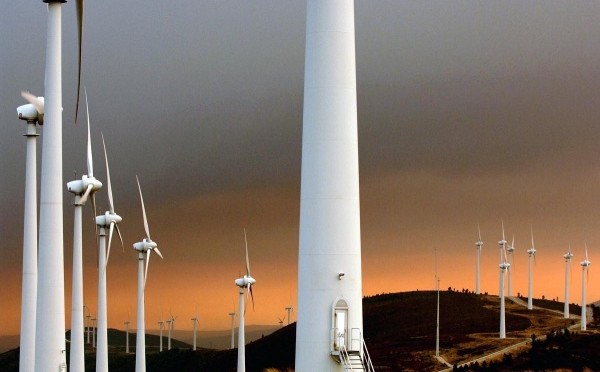Portugal’s wind power is expected to grow to around 7 GW by 2030, which is enough to cover almost 40% of the country’s electricity consumption, WindEurope’s press and comms manager has said.
“Portugal currently has 5.4 GW of installed wind capacity,” Andrew Canning told New Europe on 13 March. “All of that is onshore wind so far. But it’s enough to cover 24% of Portugal’s electricity consumption, the third highest in Europe after Denmark and Ireland. By 2030, we’re expecting this to grow to around 7 GW, enough to cover almost 40% of Portugal’s electricity consumption,” he added.
Portugal’s ambitious national energy and climate plan foresees raising renewables contribution to primary energy consumption from 31% in 2020 to 47% in 2030.
Last month, new government passed legislation that reportedly allows project operators in Portugal to add turbines to up to 20% of the grid connection capacity at existing wind farms without regulatory permission. The measure seeks to boost wind capacity while protecting electricity consumers by setting a fixed 15-year tariff of €45/MWh for the additional electricity generated.
Canning reminded that Portugal is currently going ahead with a floating offshore wind project, the world’s second such project. “This is particularly interesting for Portugal, which has large, deep territorial waters and significant wind resources. Floating is ideal because you can locate the turbines further out to sea in areas with higher wind speeds and without depth constraints,” Canning told New Europe.
Windplus – a subsidiary of EDP Renewables, Repsol and Principle Power – are developing the 25 MW floating offshore wind farm 20 kilometres off the Portuguese Viana do Castelo coast. The WindFloat project – will sit in waters 85-100 metres deep.
One of the key advantages of floating offshore wind is that turbines are located further away from shores in areas with higher average wind speeds without depth constraints. Nearly 80% of Europe’s offshore wind resources are located in waters 60 metres or more. In addition, much of the construction, installation and operation and maintenance can be done in the port, limiting costs as compared to operations out at sea.
Floating offshore wind offers vast potential for growth in Europe. At 4,000 GW, it is significantly more than the resource potential of the US and Japan combined.
Asked to comment on whether Portugal was close to meeting its EU Energy Union and climate objectives, an EU spokeswoman told New Europe on 14 March that according to the latest evaluation of Portugal’s performance in GHG emission reductions in the country report of the European semester on 27 February, although 2020 greenhouse gas emissions targets are within reach, additional effort and investments are necessary for the 2050 carbon neutral targets.
“Portugal committed to a greenhouse gas target in 2020 that involves a 1% increase of emissions compared to 2005 levels. Portugal exceeds its 2016 annual greenhouse gas emissions targets under the Effort Sharing Decision by 17.1% and is well in line to meet its 2030 target under the Effort Sharing Regulation,” the EU evaluation reads.
Based on currently available data, total greenhouse gas emissions were reduced by 17.4% between 2005 and 2017. However, the document reads, greenhouse gas emissions in 2017 increased by 7.1% compared to 2016, due to forest fires and the extreme drought. 2018 greenhouse gas inventory for 2016 indicate that the largest sectors in terms of greenhouse gas emissions were the energy sector (26% of total) followed by transport (24%), industry (20%) and agriculture (10%).”
In related news, Portuguese utility company EDP said on 12 March it plans to sell €2 billion worth of assets in Portugal and Spain, and raise €4 billion via an asset rotation programme until 2022 to fund its expansion in renewable energy, Reuters reported, noting that EDP-Energias de Portugal is the largest Portuguese company by assets and is the target of a €9 billion takeover proposal by China Three Gorges and EDP’s Portugal operations account for 90% of electricity generation and distribution in the country.
Kostis Geropoulos
neweurope.eu


